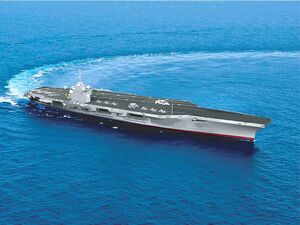In God we Trust | |||||||
| Anthem | "Star Spangled Banner" | ||||||
| Capital | Washington D.C. | ||||||
| Largest city | New York | ||||||
| Other cities | Boston, Philadelphia, Los Angeles, San Francisco, Houston, Dallas | ||||||
| Language official |
English | ||||||
| others | Spanish, French, Norwegian | ||||||
| Religion | None | ||||||
| Ethnic Groups main |
Anglo | ||||||
| others | Anglo, French, Norse, Italian, Spanish, German African | ||||||
| Demonym | American | ||||||
| Government | Federal Republic | ||||||
| President | Chris Christie | ||||||
| Population | 317,223,112 (2013 estimate) | ||||||
| Currency | US Dollar | ||||||
| Internet TLD | .com | ||||||
| Organizations | NATO, NAFTA, VATA, ASEAN, WTO | ||||||
The United States of America is the Worlds longest surviving Federation and its a Federal Republic that has influences that Extend Worldwide. The US also has a longstanding history with European powers many of which were not very good until the 20th century.
Following the Early settlement by Paleo-Indian peoples following the "discovery" of the continent mass immigration to the New World from Europe established an exponentially growing population that was controlled by the British until 1776 when the 13 colonies declared independence spurred on by the Rebellion of Vinland to the North. In 1776 the nation officially won its independence in 1776 but did not Fully Develop into the United States until 1789 in which it began a period of mass expansionism and Success earning the envy of many nations especially their northern neighbor
Driven by the doctrine of manifest destiny, the United States embarked on a vigorous expansion across North America throughout the 19th century. This involved displacing native tribes, acquiring new territories, and gradually admitting new states. The American Civil War ended legalized slavery in the United States. The Spanish-American wars also spurred on by Manifest Destiny brought the US great ability in Achieving its goals. By the end of the 19th century, the United States extended into the Pacific Ocean, and its economy was the world's largest.
History[]
See Main Article (History of the United States of America)
Government[]
The United States is the world's oldest surviving federation. It is a constitutional republic and representative democracy, "in which majority rule is tempered by minority rights protected by law". The government is regulated by a system of checks and balances defined by the U.S. Constitution, which serves as the country's supreme legal document. In the American federalist system,
citizens are usually subject to three levels of government: federal, state, and local. The local government's duties are commonly split between county and municipal governments. In almost all cases, executive and legislative officials are elected by a plurality vote of citizens by district.
There is no proportional representation at the federal level, and it is very rare at lower levels. The federal government is composed of three branches:
Executive:
The executive is the part of government that has sole authority and responsibility for the daily administration of the country. The executive branch executes the law. The division of power into separate branches of government is central to the idea of the separation of powers.
Legislative:
The United States Congress is the bicameral legislature of the federal government of the United States consisting of two houses: the House of Representatives and the Senate. Congress meets in the Capitol in Washington, D.C. Both representatives and senators are chosen through direct election. Members are affiliated to the Republican Party or to the Democratic Party, and only rarely to a third-party or as independents. Congress has 535 voting members: 435 Representatives and 100 Senators
Judicial:
The judiciary (also known as the judicial system or court system) is the system of courts that interprets and applies the law in the name of the state. The judiciary also provides a mechanism for the resolution of disputes. Under the doctrine of the separation of powers, the judiciary generally does not make law (that is, in a plenary fashion, which is the responsibility of the legislature) or enforce law (which is the responsibility of the executive), but rather interprets law and applies it to the facts of each case. This branch of the state is often tasked with ensuring equal justice under law. It usually consists of a court of final appeal (called the "Supreme court" or "Constitutional court"), together with lower courts.
Military[]
The US military is made up of 4 branches. The Army, the Navy, the Air Force, and the Coast Guard. The President holds the title of Commander in Chief, and appoints various secretaries to handle the various branches alongside the Department of Defense. During times of War the Department of the Navy manages the Coast Guard, and the during peace time its managed by Department of Homeland security.

US Supercarrier
While previously allowed during all times Conscription is now only allowed during times of extreme peril, and times of war and is Carried out by the Selective Service. The US military is populated by Volunteers which make up a force about about 1.4 million. American forces can be rapidly deployed by the Air Force's large fleet of transport aircraft, the
Navy's 11 active aircraft carriers, and Marine Expeditionary Units at sea with the Navy's Atlantic and Pacific fleets. The military operates Hundreds bases and facilities abroad, and maintains deployments greater than 100 active duty personnel in 25 foreign countries. The extent of this global military presence has prompted some scholars to describe the United States as maintaining an "empire of bases".
The US maintains a military Budget of almost 700 Billion which is a huge percentage of Global military spending. Following the Cold war the US's military Spending has declined generally over the interveneing decades and has only increased during the few intervetions in the post Cold War Climate.



